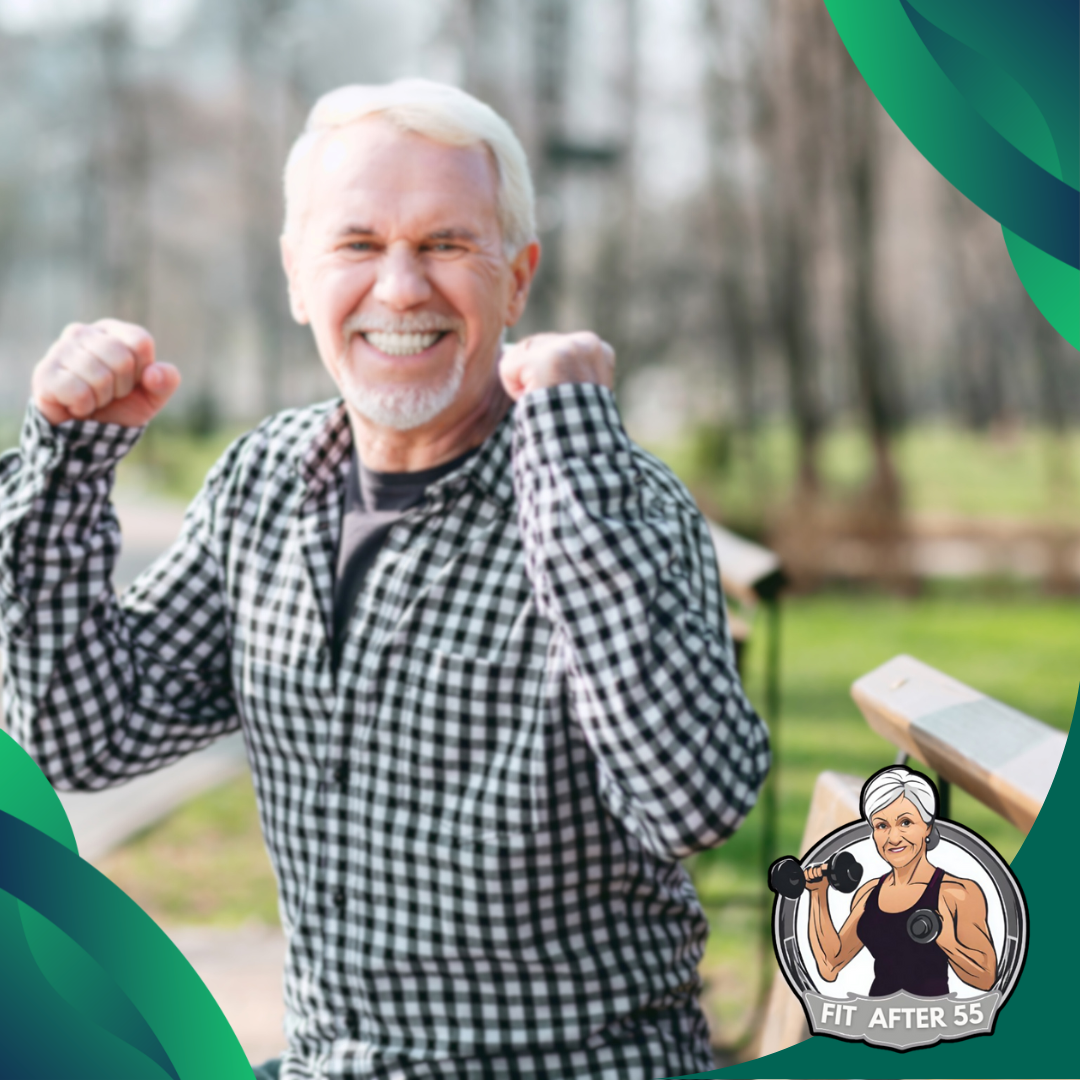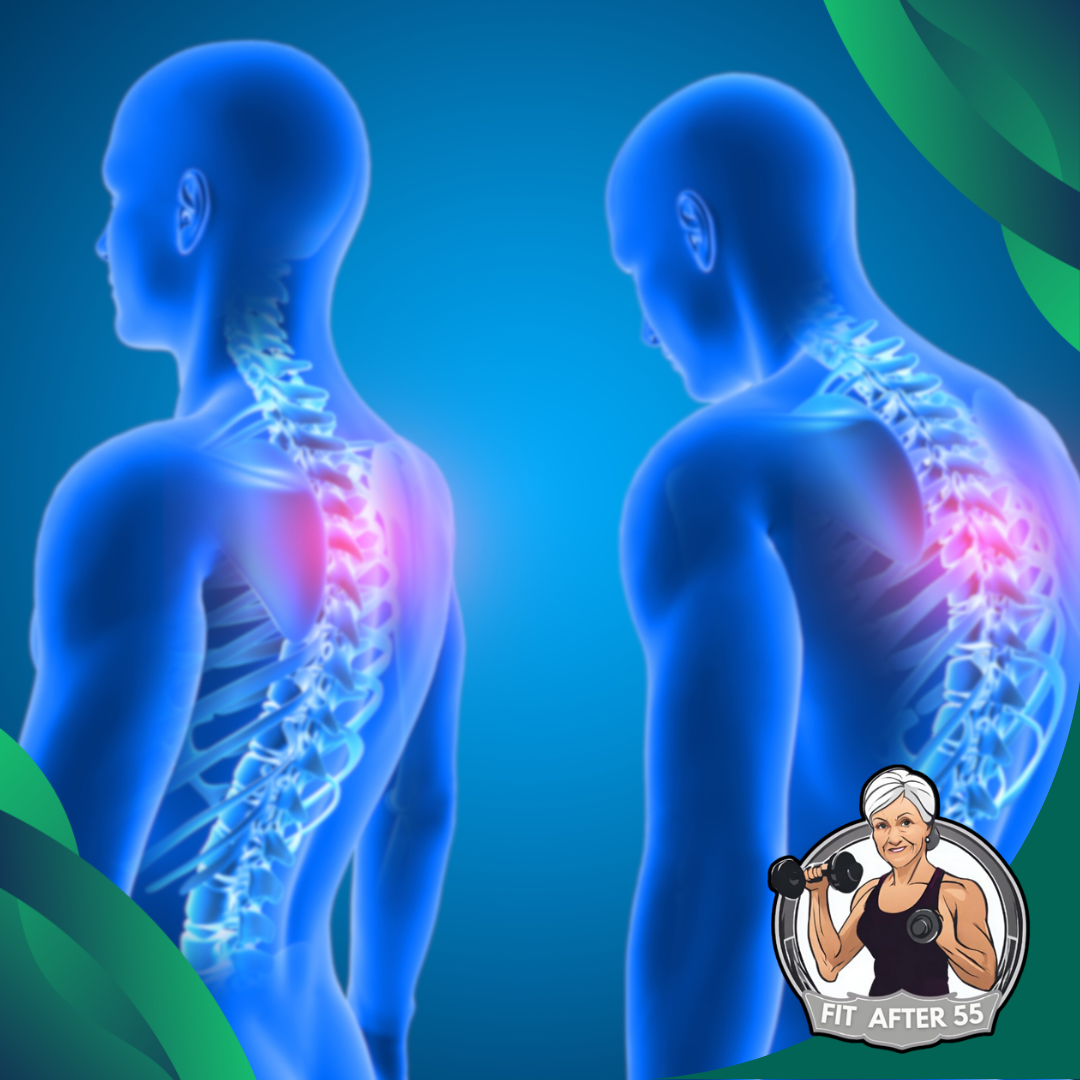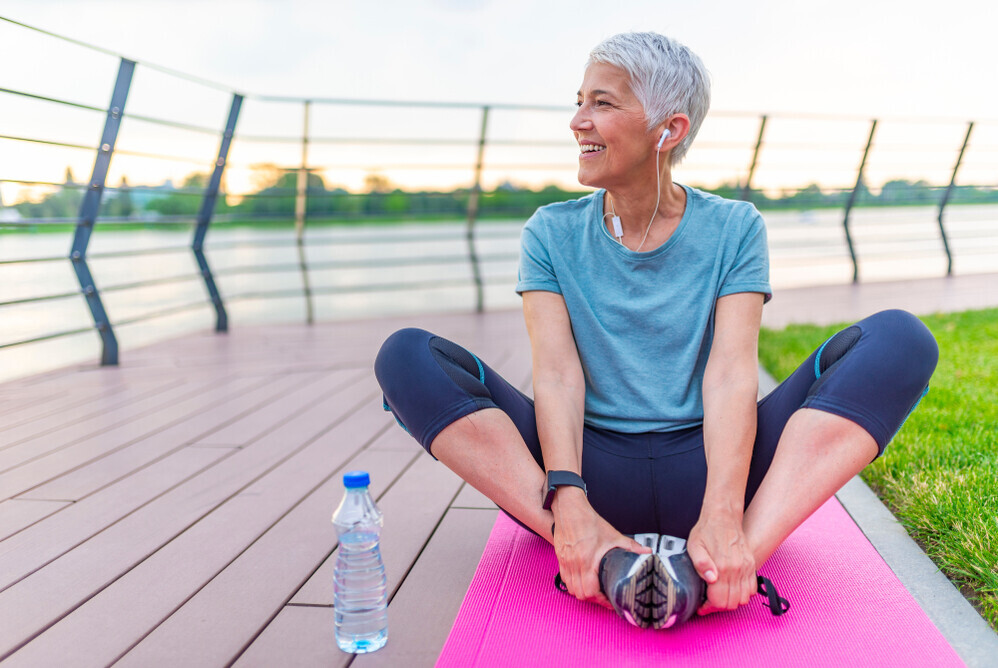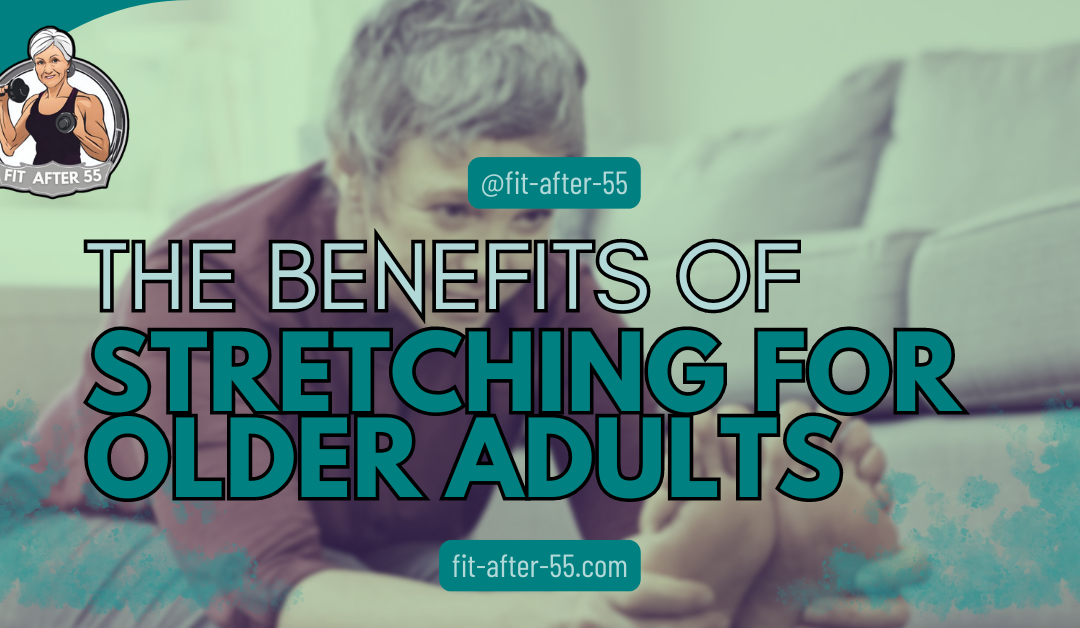Feeling tired and having a lot of pain lately? We got you! There’s a simple, effective solution that could make a big difference: stretching. Think of it as your daily dose of vitality—a way to keep your body feeling youthful and agile. Stretching isn’t just about touching your toes; it’s a powerful tool that can help you maintain flexibility, build strength, and ease those everyday aches and pains. Ready to unlock the benefits of stretching and add a spring to your step? Let’s dive into how this simple practice can transform your daily life and keep you moving with ease. Ready to get started? Let’s go!
The Benefits Of Stretching For Older Adults
I’m going to let you in on a secret that’s not really a secret: aging doesn’t have to mean an end to being active. There’s a myth that as you get older, you should slow down and take it easy. But I’m here to tell you, that’s not necessarily the case. What is essential is adapting your lifestyle to your evolving body, and a major part of that is maintaining or even improving your flexibility.

Stretching is a simple, low-impact way to keep your muscles flexible and your joints healthy. It helps you maintain your range of motion, so you can keep swinging that golf club, playing with your grandkids, or just getting up from a chair without trouble. Today, I’ll share why stretching is so important, especially as you get older.
In the next section, we’ll dive into how stretching can improve your everyday movements. I’ll highlight how regular stretching can enhance mobility and make a real difference in your daily life. Incorporating these stretches into your day doesn’t require hours of dedication. Just a few minutes each day can significantly improve your range of motion and ease tight muscles that may be holding you back.
It’s important to remember that progress doesn’t happen overnight, but consistency is key. And there’s an added bonus to staying consistent: improved mobility from stretching also leads to better balance. As we move into the next section, you’ll discover how stretching not only enhances your freedom of movement but also boosts your stability, keeping you upright and confident as you go about your day.
Key Takeaways
- Stretching helps keep your muscles flexible, making it easier to perform daily activities and reducing the risk of injury.
- Regular stretching preserves joint range of motion, which can alleviate stiffness and make movements like getting up from a chair or walking more comfortable.
- Stretching improves overall mobility, allowing you to stay active and engaged in activities like sports, playing with grandkids, or simply moving around with ease.
- Stretching can relieve muscle tightness and discomfort, helping to reduce chronic pain and improve your overall sense of well-being.
Enhanced Flexibility and Range of Motion
Flexibility is something many of us take for granted, but as we age, it becomes a precious asset that needs attention and care. Stretching isn’t just about reaching down to touch your toes—it’s a crucial practice to keep your body moving smoothly and comfortably through everyday activities.
Regular Stretching: A Key to Lasting Flexibility
Incorporating regular stretching into your routine is essential for maintaining and improving flexibility as you age. As muscles and joints naturally tighten over time, consistent stretching helps to counteract this process, keeping your body limber and more capable of performing various movements with ease.
The Vital Role of Flexibility in Daily Activities
Flexibility plays a crucial role in nearly every aspect of daily life, from simple tasks like reaching for items on a high shelf or bending down to tie your shoes, to more dynamic activities such as walking, gardening, or playing with grandchildren. Enhanced flexibility reduces the risk of injury, minimizes muscle strain, and makes everyday movements more fluid and comfortable, allowing you to remain active and independent.
Targeted Stretches for Better Mobility
To optimize flexibility and mobility, it’s important to incorporate stretches that target key muscle groups:
- Hamstring Stretches: These are essential for improving lower body flexibility, making it easier to bend and lift.
- Hip Flexor Stretches: Vital for maintaining a full range of motion in the hips, these stretches can alleviate tightness that often contributes to lower back pain and stiffness.
- Shoulder and Chest Stretches: These stretches enhance upper body mobility, important for tasks like lifting and reaching.
- Calf Stretches: Beneficial for walking, climbing stairs, and maintaining balance, calf stretches help prevent muscle tightness that can restrict movement.
Incorporating these targeted stretches into your routine can significantly enhance your flexibility, improve your range of motion, and make daily activities easier and more enjoyable. Whether you’re looking to maintain your current mobility or regain lost flexibility, regular stretching is a powerful tool to help you move freely and confidently through life.

Boosted Circulation
The Power of Stretching for Better Blood Flow
Stretching plays a key role in enhancing blood circulation throughout your body. By gently lengthening your muscles, you help improve blood flow, which delivers more oxygen and nutrients to your tissues. This increased circulation not only supports overall heart health but also reduces the risk of cardiovascular issues.
Faster Muscle Recovery and Improved Health
With better blood flow, your muscles recover more quickly after activity, reducing soreness and fatigue. Regular stretching also supports overall health by promoting better oxygen delivery to all parts of your body, keeping you energized and feeling your best.
Reduced Joint Stiffness
As you stretch, the muscles and connective tissues surrounding your joints become more flexible and less tense, which helps alleviate stiffness and improves your range of motion.
Easing Joint Pain and Stiffness
Stretching is particularly effective in relieving joint pain and stiffness, especially for those dealing with arthritis. By gently stretching the muscles around your joints, you can help reduce discomfort and improve your range of motion, making daily activities more comfortable.
Techniques to Keep Joints Flexible
To keep your joints lubricated and flexible, focus on gentle, consistent stretches. Try:
- Dynamic Stretches: Slow, controlled movements that prepare your joints for activity.
- Static Stretches: Holding a stretch for 15-30 seconds to improve flexibility.
- Low-Impact Stretching: Techniques like yoga or tai chi, which gently stretch and strengthen the muscles around your joints.
Incorporating these stretches into your routine can help keep your joints supple, reduce pain, and maintain your ability to move freely.
Improving Balance and Reducing Fall Risk
Stretching plays a crucial role in improving balance, which is key to preventing falls as we age. By increasing flexibility in muscles and joints, stretching helps you maintain better control over your body’s movements.

Stretches for Stability
Certain stretches can significantly enhance proprioception—the body’s ability to sense its position in space—and improve stability. Exercises such as calf stretches, ankle circles, and hip openers are particularly effective in boosting your balance and helping you stay steady on your feet.
Beyond just preventing falls, stretching also plays a crucial role in building confidence. The fear of falling can create a cycle of anxiety that makes you more prone to falls. By improving your body awareness and control through stretching, you can reduce this fear and feel more secure in your movements.
Incorporating stretching exercises into your routine is a decision you’re likely to appreciate. Not only will it help you maintain your agility, but it’s also a straightforward and effective way to support your independence as you age. Plus, stretching routines can be adapted to suit any fitness level, so you can find an approach that works for you without added stress.
Alleviating Pain and Enhancing Joint Health
Decreased muscle tension and pain refer to the relief and reduction of tightness and discomfort in your muscles, often achieved through stretching.
Relief from Muscle Tension
Stretching is a powerful remedy for alleviating muscle tension and chronic pain. When muscles are tight, they can lead to stiffness, soreness, and persistent discomfort. By stretching, you help relax and lengthen these muscles, which significantly reduces tension and eases pain. This is particularly beneficial for areas prone to tightness, such as the lower back and hamstrings, especially as we age.
Enhancing Joint Health
But stretching offers more than just relief from muscle discomfort; it also plays a crucial role in maintaining joint health. Think of your joints as the hinges on a door. Without proper care, these hinges can become stiff and creaky. Stretching acts like a lubricant for your body’s hinges, keeping them functioning smoothly.
Regular stretching helps maintain the flow of synovial fluid in your joints, which is essential for reducing friction and facilitating smooth movement. This fluid acts as a natural lubricant, allowing your joints to move with ease. Additionally, stretching supports the health of cartilage, the cushioning that protects the ends of your bones and prevents wear and tear.
In essence, stretching not only helps you move more comfortably but also supports the overall health of your joints, ensuring that you can maintain an active and pain-free lifestyle.

Increased Energy Levels

Energizing Effects of Stretching
Stretching boosts circulation and oxygen flow, leading to increased energy levels. A quick stretch can re-energize you by waking up your muscles and promoting better blood flow throughout your body.
Simple Energy-Boosting Stretches
Easy stretches like side bends, arm reaches, and gentle twists can be done anytime during the day to give you a quick burst of energy, helping you feel more awake and refreshed.
Enhanced Mental Well-being
Stretching has a profound calming effect on the nervous system, which can significantly reduce stress and anxiety levels. When you stretch, your body releases endorphins, which are natural mood enhancers. This gentle physical activity also helps to lower cortisol levels, the hormone associated with stress. Incorporating mindfulness into your stretching routine amplifies these benefits, fostering mental clarity and deep relaxation. By focusing on your breath and being present in the moment, you create a meditative state that can soothe your mind, ease tension, and promote a sense of inner peace.

Improved Posture

Regular stretching plays a crucial role in correcting posture, particularly for individuals with sedentary lifestyles. Sitting for long periods can lead to tight, shortened muscles, especially in the hip flexors, chest, and shoulders, which contributes to poor posture. Stretching helps lengthen these muscles, restoring their natural flexibility and balance. Specific stretches, like chest openers and hip flexor stretches, target the muscles responsible for maintaining good posture. Over time, these stretches strengthen your core and back muscles, helping you stand taller, reducing strain on your spine, and preventing the discomfort associated with bad posture.
Prevention of Injury
Stretching is a key component in reducing the risk of injuries by priming your muscles and joints for physical activity. When you stretch, you increase blood flow to the muscles, enhancing their flexibility and range of motion. This preparation is crucial because it helps your body move more fluidly and efficiently, reducing the likelihood of strains, sprains, and other injuries during exercise or daily activities. Incorporating stretching into your warm-up routine gradually increases your heart rate and circulation, making your muscles more pliable and ready for action. Equally important is stretching as part of a cool-down routine, which helps to gradually lower your heart rate and prevents muscle stiffness by promoting relaxation and circulation, aiding in quicker recovery.
Improved Sleep Quality
Stretching plays a significant role in promoting relaxation, which can lead to better sleep patterns. When you stretch in the evening, you help release the physical and mental tension accumulated throughout the day, preparing your body for restful sleep. Engaging in a gentle stretching routine before bed can calm your nervous system, reduce muscle stiffness, and ease any discomfort that might interfere with sleep. Focused stretches, such as gentle forward bends or hip openers, can help signal to your body that it’s time to wind down. By incorporating stretching into your nightly routine, you create a peaceful transition into sleep, helping you fall asleep faster, stay asleep longer, and wake up feeling more refreshed.

How to Get Started: Stretching Safely in Your Golden Years
If you’re looking to start a stretching routine that’s both safe and effective, you’re in the right place. Here’s a step-by-step guide to help you get started:
- Consult Your Healthcare Provider: Before embarking on a new stretching regimen, it’s important to consult your healthcare provider, especially if you have any existing health conditions. They can provide personalized advice and ensure that stretching is safe for you.
- Start Slow and Gentle: Begin with stretches that feel comfortable and manageable. There’s no need to push yourself too hard right away. The goal is to gradually improve your flexibility, so ease into your routine and focus on gentle movements.
- Warm Up First: Prepare your muscles for stretching by doing a light warm-up. Simple activities like walking in place or performing arm circles can help increase blood flow and make your muscles more pliable.
- Explore Classes or Professional Guidance: Consider joining a stretching class designed for older adults or hiring a certified trainer. Many community centers offer specialized classes that focus on safe stretching techniques for seniors. A professional can guide you through proper form and ensure you’re performing stretches correctly to prevent injury.
- Make It a Social Activity: Stretching doesn’t have to be a solitary endeavor. Invite friends or family members to join you. Sharing the experience can make it more enjoyable and provide added motivation.
- Embrace Flexibility and Adaptation: Don’t stress about perfecting every stretch. It’s perfectly okay to modify stretches based on your current ability level. As you become more flexible, you can adjust your routine to include more challenging stretches.
Stretching is a valuable investment in your health, enhancing your mobility, balance, and overall quality of life. Start with these simple steps, and you’ll soon enjoy the many benefits of a more limber and active lifestyle.

Did you know that holding stretches for at least 30 seconds can provide maximum benefits for your flexibility and overall muscle health? Maintaining a stretch for this duration allows your muscles and connective tissues enough time to gradually lengthen and relax, improving your range of motion and reducing the risk of injury. Incorporating these longer holds into your routine can make your stretching sessions more effective, helping you stay active and mobile as you age.
The Benefits Of Stretching For Older Adults: Your Ultimate Guide
Embarking on a stretching routine can be a transformative journey towards better health and well-being, especially as you age. By starting with gentle stretches, warming up properly, and seeking guidance if needed, you set yourself up for success and safety. Remember, consistency is key, and even small, gradual improvements in flexibility and balance can have a significant impact on your overall quality of life.
So why wait? Take the first step today by incorporating simple stretches into your daily routine. Consult with your healthcare provider, explore local classes, or find a stretching buddy to share the journey with you. Your future self will thank you for investing in your mobility, balance, and health.
Embrace the benefits of stretching and start experiencing the rewards of a more active and enjoyable life. Take action now, and stretch your way to a healthier, more vibrant you! Ready to get started? Share your stretching tips and experiences with us! Let’s inspire each other to stay active and healthy.

Frequently Asked Questions
Here are some frequently asked questions (FAQs) about the benefits of stretching for older adults:
How often should older adults stretch?
It’s recommended that older adults incorporate stretching into their routine at least 2-3 times per week. However, even a few minutes of daily stretching can be beneficial. Consistency is key to experiencing the long-term benefits.
What are the best types of stretches for older adults?
Gentle static stretches, which involve holding a stretch for 15-30 seconds without bouncing, are ideal for older adults. Focus on stretching major muscle groups, such as the hamstrings, calves, quadriceps, shoulders, and lower back. Yoga and tai chi are also excellent for combining stretching with balance and relaxation.
Can stretching help with arthritis or joint pain?
Yes, stretching can help alleviate symptoms of arthritis by improving joint flexibility and reducing stiffness. It’s important to stretch regularly but gently, without pushing into pain, to avoid aggravating the joints.
Is stretching safe for older adults with chronic conditions?
Stretching is generally safe, but if you have chronic conditions such as osteoporosis, arthritis, or a history of injuries, it’s best to consult with a healthcare provider before starting a new stretching routine. They can recommend safe stretches tailored to your needs.
Can stretching improve sleep quality?
Yes, stretching before bed can promote relaxation and reduce muscle tension, helping to improve sleep quality. Gentle stretches can signal to your body that it’s time to wind down and prepare for rest.
Can stretching help with back pain?
Stretching can help relieve back pain by loosening tight muscles and improving flexibility in the spine. Focus on stretches that target the lower back, hips, and hamstrings to support a healthy spine.
Get Moving, Feel Good!
Seeking fitness inspiration? Check out our Facebook filled with tips, tricks, and workout routines designed for those 55 and older. Join our lively community and explore ways to stay active, healthy, and joyful. Let’s get fit together!


